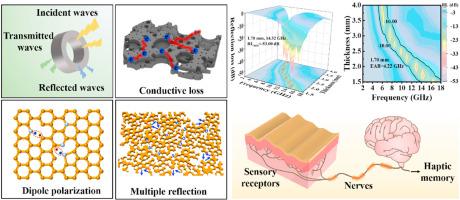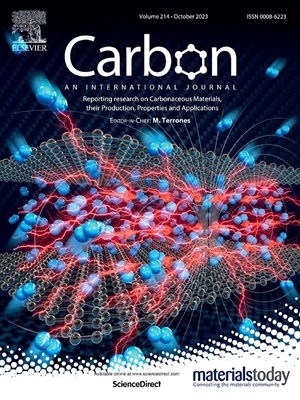Hierarchical porous biomass-derived carbon with rich nitrogen doping for high-performance microwave absorption and tensile strain sensing
Abstract
Carbon materials with porous structure and heteroatom doping have been proposed as promising microwave absorption materials. The development of materials with the integration of multiple functions is one of the main development directions and challenges of microwave absorbers. Herein, rich nitrogen-doped biomass-derived carbon (NBC) with coexistence of mesopores and macropores is developed from banana peels by hydrothermal and activation-assisted carbonization methods. The NBC exhibits excellent microwave absorption ability with thin thickness, light weight, broadband and strong absorption features. By mixing with paraffin (5 wt% NBC loading), the minimum reflection loss and effective absorption bandwidth of the composite can reach −53 dB and 4.22 GHz at a thin thickness of 1.70 mm. The corresponding specific reflection loss can reach −311.76 dB/cm, which is among the best of most-reported biomass-derived carbon microwave absorbers. On the other hand, through the reinforcement of thermoplastic polyurethane (TPU), the NBC/TPU composite exhibits good cyclic stability in tensile strain measurements. Furthermore, by integrating the strain sensor with an electrochemical metallization memristor and a resistor, a skin-inspired strain-memory which can retain the information after the remove of external stretch was presented as a proof of concept. This work provides a simple and effective method to develop multifunctional materials for microwave absorption and tensile strain sensing.


 求助内容:
求助内容: 应助结果提醒方式:
应助结果提醒方式:


